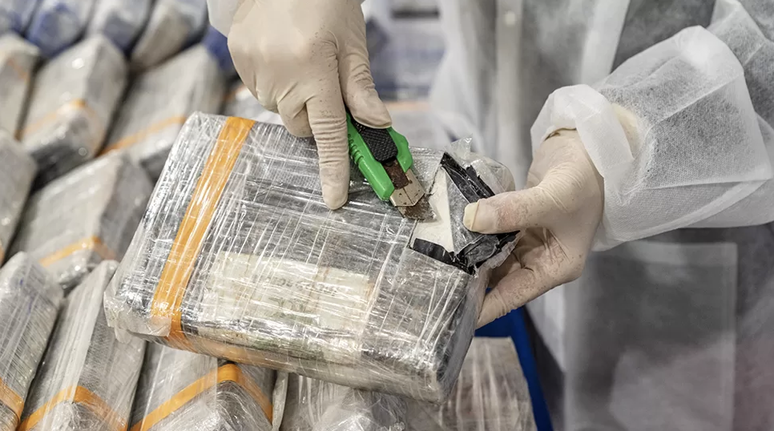Coca cultivation increased by 35% between 2020 and 2021, according to the United Nations Office on Drugs and Crime
Global cocaine production has hit record highs as demand rebounds after covid-related restrictions, according to a new report.
The United Nations Office on Drugs and Crime reported that coca cultivation increased by 35% between 2020 and 2021, reaching record levels.
The results indicate that new trafficking hubs have emerged in West and Central Africa.
The report also said that drug dealers were using international postal services more frequently to ship drugs to consumers.
“Globally, the use of parcel and courier services has increased significantly during the COVID lockdown due to restrictions on passenger flights,” the report points out. Global report on cocaine.
The paper highlights an increase in West African countries in the use of “well-established and globally operating postal services as well as smaller purchasing companies” used to smuggle quantities of cocaine into Europe and elsewhere.
Overall, the report points out that Europe and North America are the largest markets for cocaine, followed by South America, Central America and the Caribbean.
While the report said markets in Africa and Asia “are still limited,” the UN’s Ghada Waly said the potential for that market to expand was a dangerous reality.
The increase in production was the result of an expansion of coca cultivation, as well as improvements in the conversion of coca into cocaine powder, according to the report.
The document points out that the covid-19 outbreak has had a “disturbing” effect on drug markets, as international travel has been severely curtailed. Demand for cocaine has declined as nightclubs and bars have closed during the lockdowns.
“However, the latest data suggests that this decline has had little impact on long-term trends,” the report said. “Global cocaine supply is at record levels.”
Regarding Brazil, the report mentions an increase in cocaine-related deaths during the pandemic and states that it is possible that a “change in trafficking dynamics has resulted in an increase in the availability of cocaine in the country and an intensification of patterns of use» .
According to the United Nations, the pandemic has affected the cocaine trade in Brazil, both on the supply and demand sides.
Faced with logistical hurdles, the report notes, traffickers are increasingly turning to planes to bring cocaine to Brazil, leading to a general increase in the quantities entering the country.
But criminal groups appear to have struggled to coordinate the transit of the drug within Brazil to Atlantic ports, according to the report. And several indicators show that the level of cocaine production from the country has decreased.
Other key findings released by the United Nations include:
- Colombia still dominates the trafficking routes, although the routes to Europe have evolved
- Consumption in Australia peaked in mid-2020, fell by 50% the following year and increased “moderately” in the final months of 2021
- Mexican and Balkan criminal groups approached the manufacturing center to gain access to supplies
- Crack use is on the rise in several Western European countries, including the UK, Belgium, France and Spain
- In Ukraine, the market was booming, but since the invasion of Russia last February, demand has been drastically disrupted.
Source: Terra
Rose James is a Gossipify movie and series reviewer known for her in-depth analysis and unique perspective on the latest releases. With a background in film studies, she provides engaging and informative reviews, and keeps readers up to date with industry trends and emerging talents.







